What is Opal?
Opal is a mineraloid and measures between 5 and 6.5 on the Mohs scale. It is a hydrous silicon dioxide and is without a definite crystalline structure or chemical composition. It contains a variable amount of water, making it a mineraloid, rather than a mineral.
Opal is a breathtakingly beautiful stone and occurs in many shades, tones, patterns, hues, and color combinations.
It can flash every color of the spectrum and is a highly desirable stone for jewelry of all kinds, even though it is quite fragile.
The best quality Opals command prices per carat that rival those of Diamond, Ruby, Sapphire, and Emerald.
The Origin: Where Is Opal Found?
Opal can be found in Australia, Mexico, Peru, South America, Great Britain, Canada, Unites States, Honduras, and Slovakia.
The History & Lore of Opal

The myth that Opals are unlucky stones is a recent creation and originated in the gothic novel Anne of Geierstein by Sir Walter Scott.
Lady Hermione, the grandmother of Anne, appeared to possess magical powers.
She wore an Opal in her hair that: “amid the changing lights peculiar to that gem, displayed internally a slight tinge of red like a spark of fire.”
This seemed to reflect her moods and emotions and flashed fire whenever she was anxious or agitated “as if it sympathized with the wearer’s emotions.”
On the day of her daughter’s christening, drops of holy water struck her opal, which “shot out a brilliant spark like a falling star, and became the instant afterward lightless and colorless as a common pebble.”
Hermione then collapsed. Two hours later, all that remained of her was a handful of gray ashes.
The Romans and Greeks
The name Opal was coined by the Romans and comes from two source languages.
Sanskrit “Upala” meaning precious stone, and Latin Opalus, Greek Opallius, both of which translate as “to see a color change”
To the Romans, Opal was a token of purity and Hope, and to the Ancient Greeks, it signified foresight and the powers of prophecy.
In 75 Ad, the Roman scholar Pliny wrote:
“Some opals carry such a play within them that they equal the deepest and richest colors of painters. Others…simulate the flaming fire of burning sulphur and even the bright blaze of burning oil.”
Ancient Romans provided the first real market for Opal.
With their limitless resources and the vast wealth of the Roman Empire, many nobles and rich Senators developed a passion for these precious stones.
Mark Antony coveted one such Opal as a gift for his lover Cleopatra.
The Opal was owned by another Senator, Nonius, and Antony had him banished when he refused to part with it.
Middle Ages
In the Middle Ages, Opal was referred to as the Eye Stone, due to the belief that Opal could correct defective eyesight.
It was also thought to maintain the natural sheen and color of blonde hair.
The Victorians
Opals slowly began to fall out of favor in the 18th and early 19th centuries, largely due to Sir Walter Scott, as detailed above.
Opals came to be associated with pestilence, famine, bad luck, and the fall of Kingdoms.
Queen Victoria, however, was fond of Opals and her influence restored Opals to popular favor.
She presented her five daughters with fine specimens and the stones quickly became sought after in the Royal courts of Europe.
Description of Opal
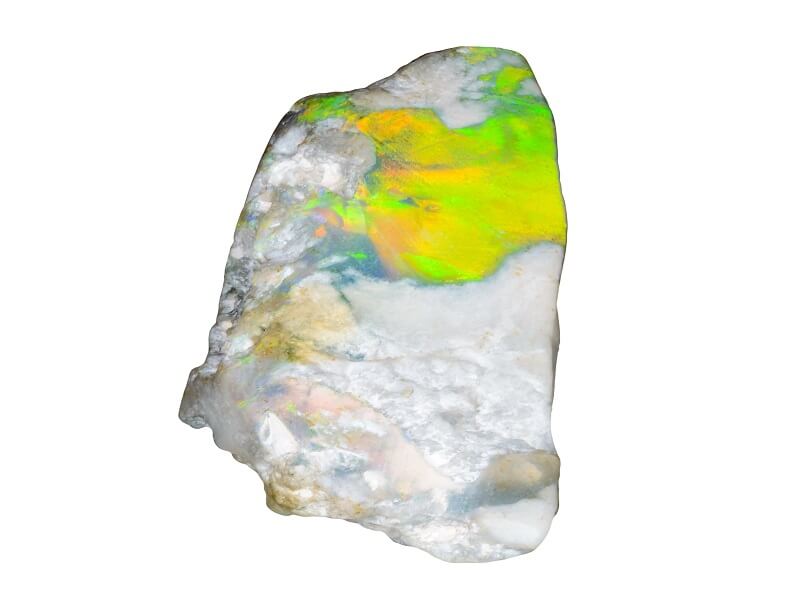
The most important facet of an Opal’s identity is known as the play-of-color within its structure.
Play-of Color is an optical phenomenon that occurs when light enters the crystal, interacts with the tiny silica spheres within the stone, and then leaves in a flash of spectral colors.
This accounts for the ways Opals have seemingly countless appearances.
The stone will change constantly as it is moved under a light source when the light source is moved, or, as the person looking at the stone changes their angle of view.
How to Identify Opal
Opal is easy to replicate, and some specimens may even consist of little more than tinsel and Perspex.
However, Opals that are known as Doublets and triplets consist of a thin layer of Opal glued onto a backing material, which can be a dark form of Potch. Or metal or plastic.
Look at the side of the Opal to determine whether it has distinct layers. If it does you may be looking at a doublet or triplet.
Look also at the back of the stone, is the backing perfectly flat?
Most genuine, solid Opals are uneven, curved, or bumpy due to their natural formation.
Man-made replicas are flattened so that they can be glued together.
Look at the top of the Opal. If it appears to look “glassy” it could be a triplet, as these are often capped with a hard, clear plastic or Quartz.
If you can see through the top of the Opal from the side this could also indicate a triplet.
If the stone becomes cloudy after a short time, you can be sure that you have an imitation stone and not a genuine Opal.
The cloudiness occurs when water gets between the layers, dissolving the glue and causing the stone to appear dull.
Synthetic solid Opal is harder to identify. Gilson Opal is created in a laboratory and looks very much like a genuine article.
On close inspection, you may be aware that the pattern is just too “perfect” and ordered.
Types of Opal
Common Opal
This stone is anything but “common” in appearance.
Sometimes known as “potch”, this variety does not display the characteristic flash and play-of-color of precious Opal.
But is nevertheless extremely beautiful and occurs in a wider variety of pastel colors than any other gemstone.
Hyalite or Water Opal
The watery depths of this crystal make it an excellent stone for scrying and making spiritual connections.
It helps with out-of-body experiences and shamanic journeying.
It connects the Base chakra with the Crown, enhancing the experience of meditation.
Green Opal
This variety is said to alleviate the symptoms of colds and flu and to strengthen the immune system.
It is a cleansing and rejuvenating stone that promotes emotional recovery from shock or trauma and brings meaning to everyday mundanity.
Fire Opal

This variety of Opal usually has a predominance of deep, fiery red in its makeup.
It is an enhancer of personal power and is protective against danger or threat. Fire Opal is a symbol of hope.
It is an energy amplifying stone and is said to magnify thoughts and feelings, returning them threefold.
The resulting emotional turmoil can sometimes be hard to handle, and Fire Opal can also be a source of support during this time.
This crystal is wonderful for letting go of the past.
Fire Opal is said to heal the intestines and kidneys and to balance the adrenal glands, helping to avoid burn-out.
It also stimulates the sexual organs, soothes lower abdominal cramps, and pains, and strengthens the spine.
Chrysopal (Blue-Green Opal)
Chrysopal is a mood-enhancing stone, that helps to alleviate emotional burdens, often through the release of crying.
It promotes openness and trust between individuals and helps you to observe the world with fresh perspectives and new eyes, especially when you are feeling jaded or cynical.
Physically, chrysopal detoxifies and regenerates the liver and relieves tightness or congestion in the chest.
Cherry Opal
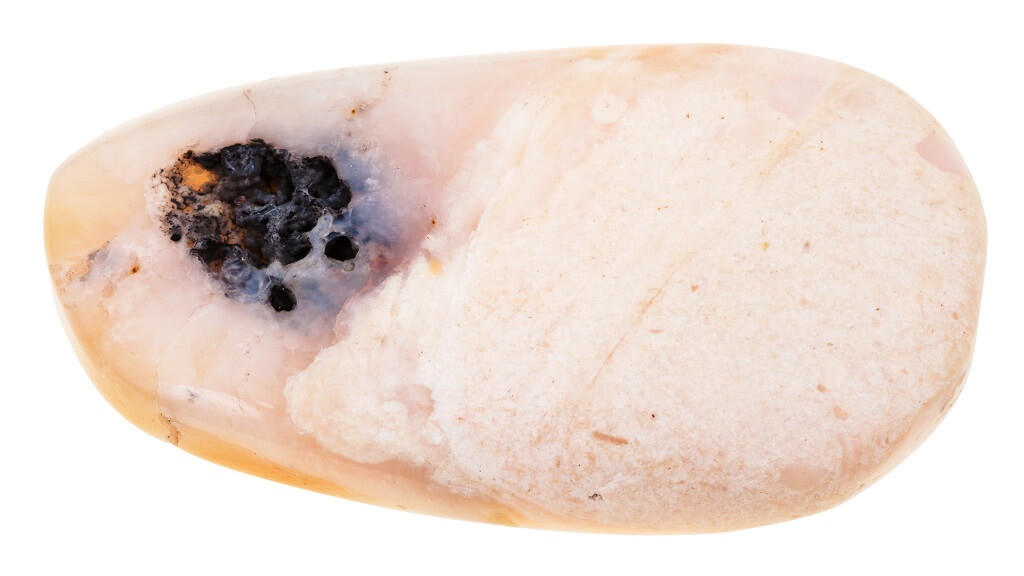
Cherry Opal can help to promote tissue regeneration and heal blood disorders.
It is aligned with the base and sacral chakras and can be used to stimulate libido, promote creativity, and connect us with our latent psychic gifts of clairvoyance and clairsentience.
Blue Opal
Blue Opal is excellent for soothing the emotions and promoting healthy communication, especially with regard to our needs, fears, or feelings about personal relationships.
It realigns us to our true spiritual purpose and can aid spiritual development when used in meditation.
Black-Brown-Gray Opal
This type of Opal resonates with the Sacral Chakra and can be used to ease and release sexual tension or fear.
It is also good for integrating newly released emotions, grounding them down into the Base and Sacral chakras and into the physical body.
Opal Birthstone Meaning & History
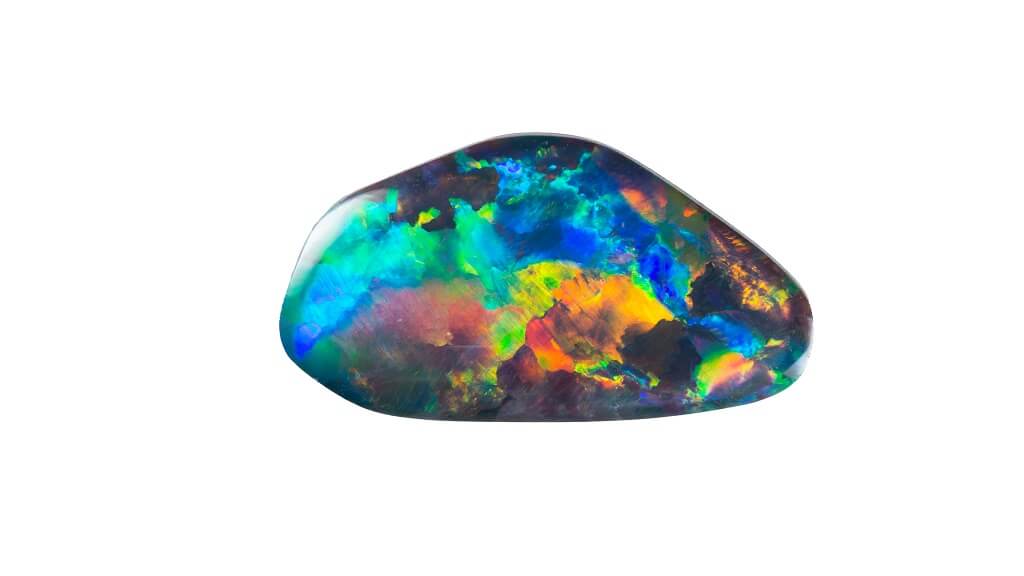
Scorpio
Opal is the official birthstone for Scorpio (Oct 24 to Nov 22) and for the month of October.
Scorpio is a deeply emotional and sensitive water sign.
They are often misunderstood, and can indeed seem quite intimidating, forceful, and scathing in their comments at times.
However, Scorpios are one of the most loyal and steadfast signs of the zodiac and make long-lasting connections that stand the test of time.
Scorpios are determined people and when they decide that they want to get or achieve something, nothing will hold them back.
They are focused and strong-minded, can be ambitious, and make good leaders.
The Fiery nature of Fire Opal would be a good gift for a Scorpio as it is known to facilitate change and progress
Scorpios are also brave and will sometimes run into danger unthinkingly.
The protective power of precious Opal makes an ideal gift for this type of Scorpio.
Because Scorpios are loyal, honest, and trustworthy, you can be sure that your friendship, or partnership, with a Scorpio, will be a deep and lasting one.
Scorpios also have some negative traits, which can be ameliorated by the fine vibration of Opal.
For example, the very determination and ambition that makes a Scorpio likely to succeed in all they do can lead to them feeling jealous or envious of those who seem to have more than they do.
They are quick to anger in some circumstances and can be quite biting in their retaliation to perceived slights.
Scorpios can often display feelings of “entitlement” and find it hard to be generous in defeat.
Opal helps teach the qualities of patience and empathy, which can be good for Scorpios at times like this.
Secrecy and secretiveness come naturally to this sign.
Opal is known as a “stealth stone” and many Scorpios will be naturally drawn to this quality in the gem.
They do not like to show vulnerability and consequently tend to hold their cards close to their chest emotionally.
Like the Scorpion, they lie in wait, gathering information on “competitors” or enemies, and strike hard and fast only when they are sure they can win.
This sometimes makes them hard to deal with as people.
The soothing influence of Blue Opal can help Scorpio to deal with this personality trait.
Opal Treatment
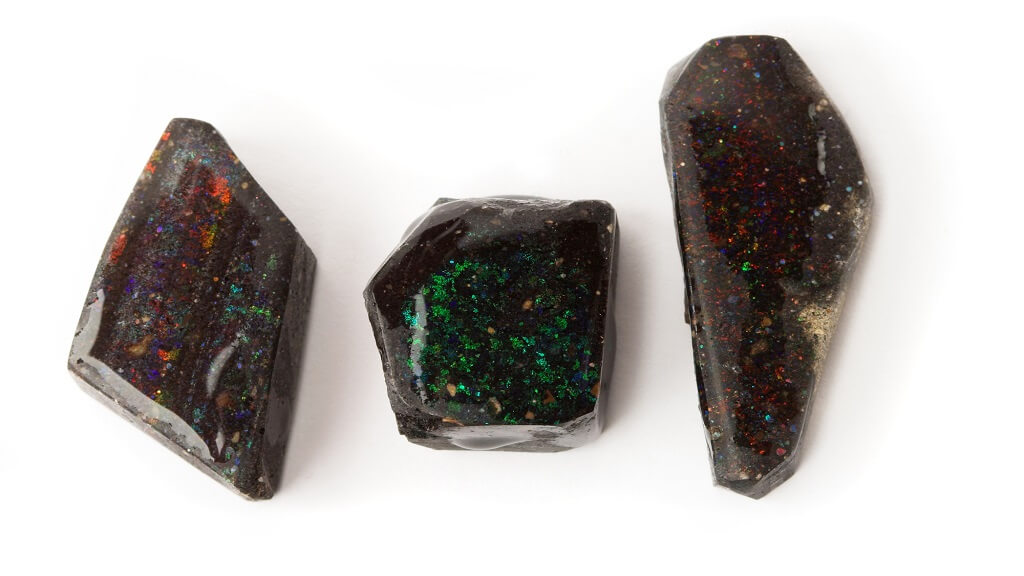
Opal is a fragile stone and care should be taken to protect it from knocks and scratches.
It measures between 5 and 6.5 on the Mohs scale.
Household dust measures approximately 7, so this will give you some idea of how delicate Opals can be.
How to Clean and Care for Opal
Opal can be cleaned with warm water. mild soap and a very soft brush (not a toothbrush).
It should be rinsed in clear water afterwards and blotted dry with a soft cloth.
Avoid leaving Opals in direct sunlight as this can cause hairline cracks on the surface of the gem, known as “Crazing”.
The amethyst will absorb all of the negative vibrations.
To charge your Opal and bring it back to its original vibrational state place it next to an Amethyst cluster overnight.
The amethyst will absorb the negative vibrations from the Opal and return it to its original state.
Buyers Guide: Tips & Advice
When evaluating an Opal to buy this should be done under controlled lighting on a dark background.
This is because the primary quality you will want to consider is the play-of-color in the stone.
Opal Quality Factors
Color
Opal hues range across the spectrum. Firstly, consider the background color of the gem in question, also called the body color.
This color is created by the suspension of tiny impurities within the Opal’s silica spheres, it can range from white, through brown and gray to black.
The play-of-color against the body color is what gives an Opal its unique appeal.
What causes play-of-color?

Opal is a mineraloid, composed of tiny spheres of amorphous silica.
These spheres are translucent to transparent and allow the passage of light through the stone.
In precious Opal, these spheres are very regular, in both size and in their repeating pattern, and will diffract the passing light into its component colors.
It is as the light exits the Opal, in what is known as a “flash” that constitutes its play-of-color.
The brighter, and more dramatic, the colors, the more precious the stone.
Often the play-of-color is more pronounced in Black Opal as the colors stand out against the dark body color.
The strength of the colors exhibited in an Opal’s play-of-color is the most important factor in determining its quality.
This is closely followed by the range of colors displayed and the brightness of the colors.
Clarity
Clarity in Opals is a moveable feast. It is measured by the degree of inclusions within its silicone spheres and clarity can range from transparent to translucent to opaque.
However, the desired degree of transparency will differ, depending on whether you want a black Opal, in which case a dark body color is best, or a crystal Opal, which will be transparent.
A cloudy or milky background is, however, not good, and lowers the value of any Opal.
Opal is anhydrous, and when it loses moisture, it may exhibit fine cracks or fissures, resembling a spider’s web.
This “crazing” can be avoided if you make sure never to leave your Opal in direct sunlight or in excessively hot and dry conditions.
Cut
Some cutters are reluctant to touch Opal, due to its delicacy. It is easy to fracture or spoil an Opal when cutting it, so it is best left to the experts.
A good cutter will consider the color, patterns, and clarity of the stone before shaping it.
Precious stones, such as Sapphires and Rubies, are cut in such a way as to maximize their size, weight, and color.
This is not true of Opals, and cutters may fashion Opals into irregular shapes that keep the maximum play of color.
These gems are often quite large and can be costly, due to their uniqueness.
Opals are usually cut into oval shapes and the cut should be as symmetrical as possible.
If it is a cabochon, the dome should be well-rounded.
Too high and it will be difficult to set into jewelry. Too flat and it will be vulnerable to cracking or breaking.
Carat Weight
Opal can be comfortable to wear even in larger pieces, due to its relatively low density.
Common sizes for Opals in jewelry are 6×4, 7×5, and 8×6.
The largest known Opal is the Fire of Australia, which is an uncut Opal weighing 998 grams, or just under 5000 carats.
Opal and Chakras
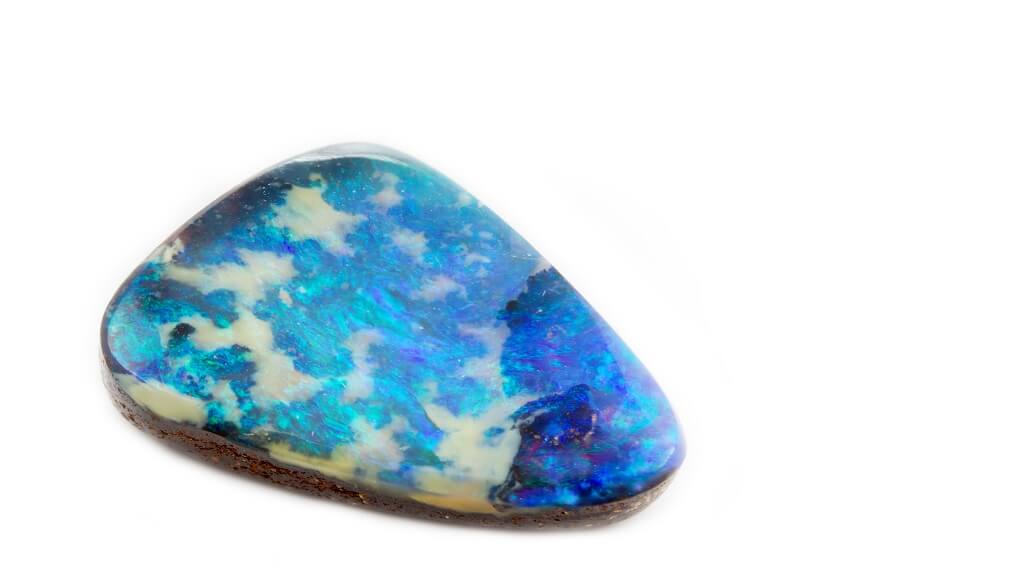
Opal enhances cosmic consciousness and is therefore aligned with the Crown chakra.
It also cleanses, activates, and stimulates the Third eye chakra and encourages psychic development.
Use Opal on these chakras when doing a chakra cleanse or balance.
The opal will absorb and reflect thoughts and feelings, amplifying them and reflecting them back to the Source.
Because Opal exhibits such a wealth of colors, and because it has no definite crystalline structure, it is a very flexible healing stone that can be beneficial for all of the chakras, the aura, and the emotional or subtle body.
Use your intuition when using Opal to heal and trust that it knows where to send the required healing vibrations.
Opal Healing Properties
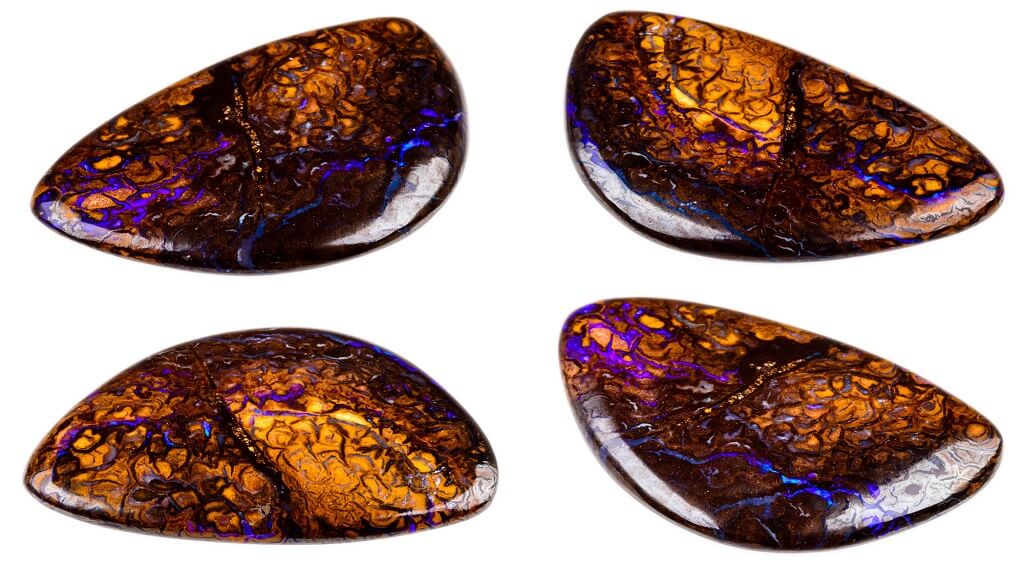
Opal has a fine vibration, is protective and reflective, and has a karmic influence on the mind, body, and spirit.
This means that you need to be aware that whatever you are putting out there may come back to you.
Different types of Opal have their own unique healing applications (see the section on Different Types of Opal above)
Physical Healing Properties
Opal strengthens the will to live. It is beneficial to the eyes, especially in an elixir, and purifies the blood and kidneys.
Opal is also said to treat Parkinson’s disease, infections, and fevers.
Mental & Emotional Healing Properties
Emotionally, Opal has always been associated with love and passion, desire, and eroticism.
It intensifies emotional states and is very sensual in its effects and influences on the emotions.
It helps to release inhibitions and to stabilize the emotion when used in conjunction with other stones, such as Carnelian or Fluorite.
However, Opal can also scatter emotions and energy, causing unwanted feelings to surface and causing feelings of overwhelm or helplessness.
To counteract this, ensure that grounding and integrating stones are close by, and perform earthing and grounding exercises whenever the energy gets out of hand.
Metaphysical Properties
The metaphysical properties of Opal vary depending on the type of stone.
All Opals have a high spiritual vibration, and all are protective stones in one way or another.
Opal is a stone for exploring past lives and other incarnations.
It can show you emotions, thoughts, insights, and wisdom gained in past lives, and also bring up unconscious feelings and events that have lain buried in your energy field from your early life.
Spiritual Healing Properties
Opal is a spiritual stone with a high, fine vibration. It is a mystical crystal that can aid seers in scrying the future and seeking the truth.
Opal can induce mystical visions, stimulating imagination and creativity. It aids in accessing and expressing one’s true self.
Opal is a spiritually protective stone and has long been regarded as a crystal of stealth.
If you need to maintain a low profile when venturing into risky or dangerous situations Opal enables you to cloak your real motives and emotions to keep yourself safe.
How to Use Opal
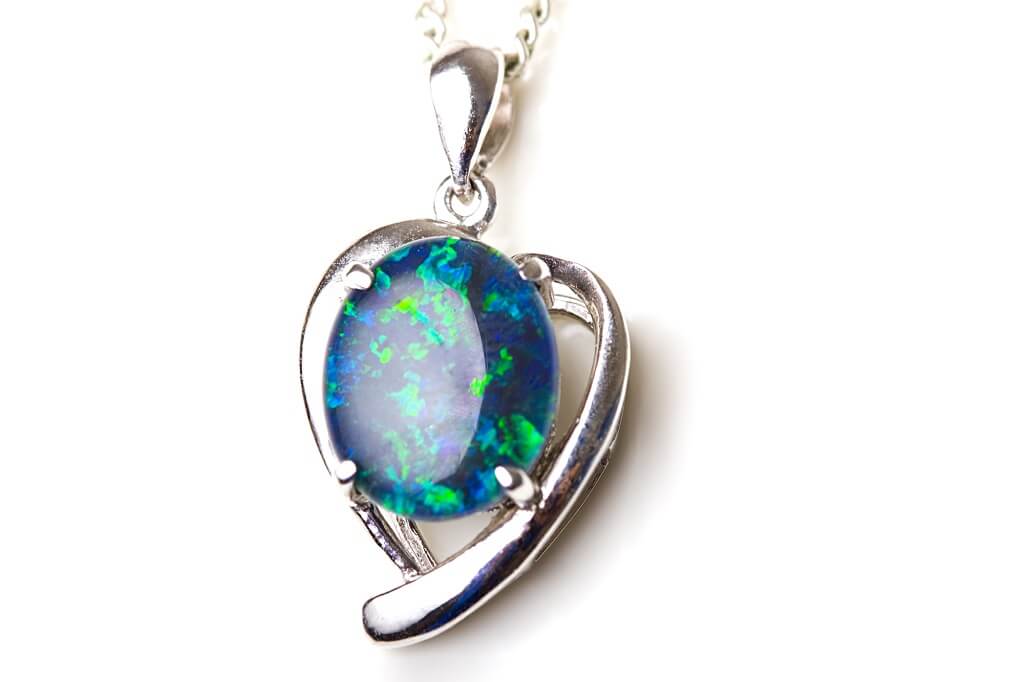
As Jewelry
As mentioned above, Opal makes wonderful earrings, necklaces, and rings.
It is a delicate stone so it is best to avoid swimming or energetic sports when wearing Opal as it may become damaged through prolonged exposure to water or rough contact sports.
In-Home and Office
Place Opal in the wealth corner of your home to attract financial abundance.
It can also be used in the relationship corner to ensure harmonious family life and is known to be protective against harmful emanations from computers and other electronic devices.
Best Crystal and Gemstone Combinations with Opal
Black Tourmaline and Opal
Although these two gems have very different qualities, when they are combined they work beautifully together.
Opal strengthens and sharpens your mind while tourmaline is perfect for bringing calm and serenity to the mental processes.
This brings about confidence and allows you to repel negative influences and forces.
Therefore, pairing tourmaline with opal is a good combination.
Lapis Lazuli and Opal
Opal can help you to manifest your desires and intentions.
Pairing Lapis Lazuli with Opal adds the quality of abundance into your manifestation.
Lapis Lazuli activates your Higher Mind and intellectual abilities, enabling you to set crystal clear intentions and to formulate your plans for achieving your goals.
Lapis Lazuli, combined with the power of Opal, helps to attract success, promotion, lasting recognition, and an abundance of material wealth into your energy field.
Garnet and Opal
When it comes to passion and love, this combination with Garnet is a winner.
Opal has long been associated with sexual and sensual desire, eroticism, lust, and seduction.
You can further amplify this power by combining it with Red Garnet, which is aligned with the Sacral chakra and brings in creativity and imagination.
If you are looking to improve your sexual relations and increase your libido, try using both Opal and Red Garnet when you set your intentions.
Final Thoughts & Conclusion
As a stone of passion and sensuality, Opal has no rival. Opal has a high, fine vibration that also expands your Higher Mind and consciousness.
Opal can be used to clear your environment of negative influences and energies, and to protect against electromagnetic smog.
It is a beautiful stone that is well worth the extra care you may have to lavish on it to keep it in pristine condition.
References
Gem Society | Geology | GIA | Prepscholar

